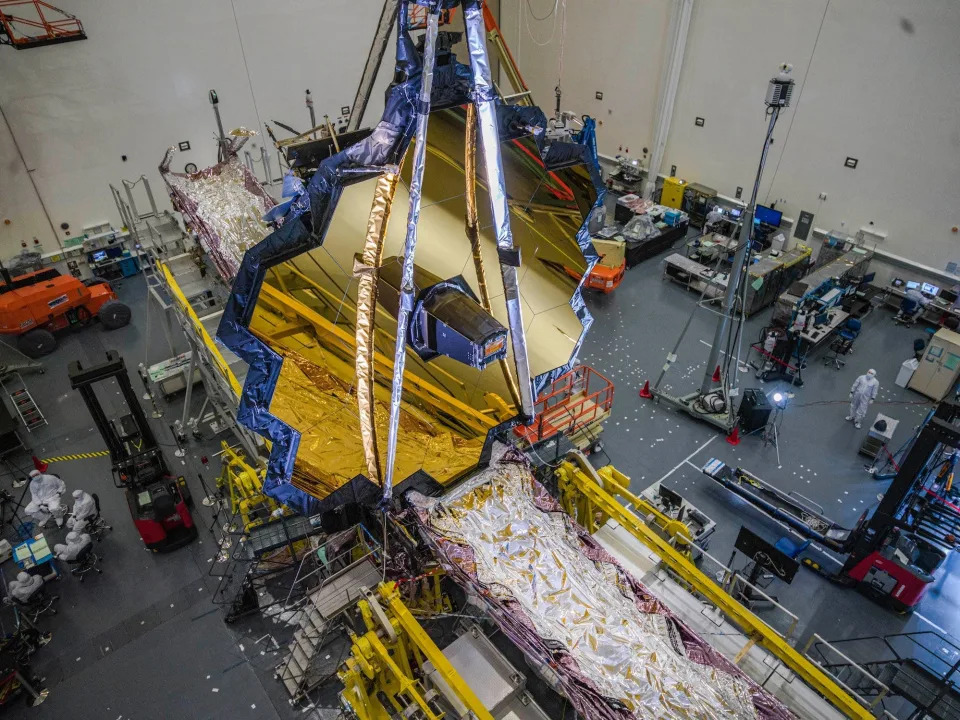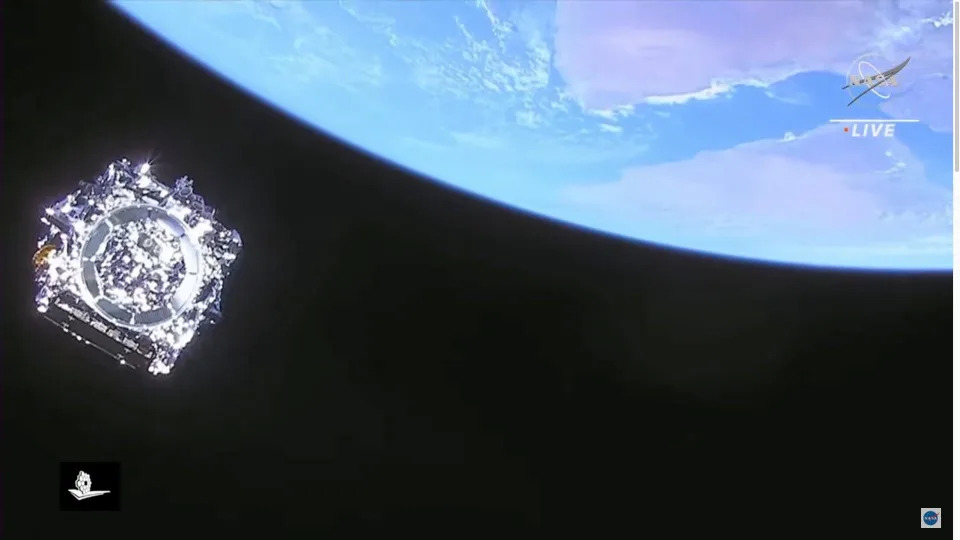Supporters of Palestinians in U.S. see little hope for peace progress with Biden's Middle East visit
Marc Ramirez, USA TODAY
Fri, July 15, 2022
As a Palestinian American herself born and raised in the U.S., Suher Adi has been long attuned to the history of her people and of U.S. foreign policy in the Middle East.
She grew up to understand her heritage in ways separate from the negative images she saw on TV. Adi went on to major in Middle Eastern history and became involved in activism, including dozens of pro-Palestinian rallies held across the U.S. in May 2021 following the ceasefire agreed to by Israel and Hamas after another period of violence.
Those solidarity marches reflected a rise in American support for the cause, most keenly among younger Americans like Adi. But as President Joe Biden visits the West Bank on Friday — on Jumu'ah, the holy day of rest for Muslims — she and other advocates are pessimistic about the visit given what they see as the administration's failure to take any real action to curtail continued Israeli settlement expansions or the expulsions of Palestinians in the West Bank.
What Adi and her peers have seen, she said, is that U.S. policies favoring Israel remain consistent no matter which political party is in charge.
“That’s just a reality that our generation is keenly aware of,” said Adi, 26, of Washington, D.C.
A Gallup poll released early last year showed that while most Americans still side with Israel, a growing number of Americans are sympathetic to the Palestinian cause. But last week's pronouncement by the U.S. State Department regarding the May 11 killing of Palestinian-American journalist Shireen Abu Akleh, shot in the head while covering an Israeli military raid in the region, has further deepened the rift.

Yellow tape marks bullet holes on a tree at a makeshift memorial where Palestinian American journalist Shireen Abu Akleh was fatally shot in the West Bank city of Jenin.
The U.S. State Department said in a statement issued on July 4 that while the gunfire that killed Abu Akleh had likely come from Israeli positions, there was “no reason to believe” that the shooting was intentional. Eyewitnesses, as well as members of Abu Akleh’s crew, say there were no Palestinian militants in the area and that Abu Akleh was wearing a blue vest marked “Press.”
United Nations human rights officials, on the other hand, alleged that Israeli forces were “behind” the fatal shooting, noting it was "deeply disturbing" that Israel had not conducted a criminal investigation.
“What does it say about the freedom of the press that we champion across the globe?" Adi said. "Unfortunately it makes it apparent that the Biden administration does not really care about those things. We’re in a place where a Palestinian-American journalist is being disregarded because of her status as a Palestinian.”
Gallup’s World Affairs poll, released in March 2021, showed that while most Americans still side with Israel, favorable views of Palestinians are on the rise. Gallup's annual World Affairs poll found that about 30% of overall respondents sympathized with the Palestinian Authority, up from 21% in 2018 and higher than the annual average of 19% since 2001.
The Palestinian independence movement in the U.S. gained support at the same time as the Black Lives Matter movement, a concurrence some said was not coincidental; both are rooted in similar anger, especially among the young, over a lack of accountability, police brutality and systemic racism.
The area encompassing Israel and the Palestinian territories is home to a combined 13 million people. Israel exercises control over the West Bank and East Jerusalem. While Israel formally pulled out of Gaza in 2005, it still controls the Strip's northern borders as well as territorial waters and airspace. Several human rights organizations characterize the discrimination and subjugation experienced by some Palestinians as tantamount to apartheid and persecution.

May 20, 2022: Palestinians take cover behind a makeshift barrier during clashes with Israeli forces following a demonstration against the expropriation of Palestinian land by Israel in the village of Kfar Qaddum near the Jewish settlement of Kedumim in the occupied West Bank.
The comparison is what spurred Ethan Nichols, a 20-year-old sophomore at Xavier University in Cincinnati, Ohio, to take an interest in the Palestinian cause and participate in last year's Palestinian rights protests.
"I learned about apartheid in South Africa while growing up," Nichols said via email, "and making that comparison really helped me to understand the oppression facing Palestinian people."
"This is a basic human rights issue, and the Biden administration must take it more seriously," Nichols said. "... We can't pick and choose which nations we condemn human rights abuses in."
Journalist's killing further complicates troubled relations
Others who have long advocated for or studied the issue say they're pessimistic about the president's visit as well, particularly with the fatal shooting of Abu Akleh, whose family, along with the Palestinian Authority, have accused Israeli forces of deliberately targeting the well-known veteran journalist.
“I don’t think there’s any commitment on the part of the U.S. to do anything to move the ball forward,” said Jim Zogby, president of the Arab American Institute, a community advocacy group based in Washington, D.C.
The State Department’s declaration regarding the killing, Zogby said, “was almost an ingenious exercise on obfuscation…. The goal remains how not to infuriate Israel, and not at all to provide Palestinian justice. Snipers don’t shoot from hundreds of yards away and hit somebody in the head and have it be an ‘Oops.’ It’s playing us for fools.”

Israeli authorities project an image of the Israeli and U.S. flags on the walls of Jerusalem's Old City in honor of July Fourth. President Joe Biden is set to visit Israel and the West Bank as part of a broader trip to the Middle East.
Louise Cainkar, a professor of social welfare and justice at Marquette University in Milwaukee, Wis., said Palestinians see Abu Akleh’s killing in the same way that many Americans have viewed the killings of innocent Black Americans by police in the U.S.
“Just like the policing of Arab and Muslim communities in the U.S., Palestinians are oppressed under the pretext of terrorism,” Cainkar said. “But what’s really going on is expansion, just as indigenous people were treated here in the U.S. Do I think Biden will do anything to change this scenario? No.”
Zogby said that for Biden to visit the West Bank without any real pushback against Israeli actions "speaks volumes, that we don't care anything about the lives of Palestinians.... The priority of this administration from the beginning has been not to do anything to disrupt Israeli politics,"
Biden's West Bank visit 'more of a courtesy call'
To alter that perception, Biden must signal to Israeli leaders that the U.S. “will not support policies that only seek to further entrench the occupation and violations against human rights,” said Rev. Mae Elise Cannon, executive director of Churches for Middle East Peace, a coalition of Orthodox, Catholic and Protestant churches working toward Middle East peace.
“Right now, over 1,000 Palestinians in Masafer Yatta are under imminent threat of expulsion,” Cannon said, referring to a smattering of villages south of Hebron, in the southern West Bank. And while Israel has postponed a decision over whether to allow 3,000 new settlements to be built in a contested area that critics say would further divide East Jerusalem from the rest of the West Bank, the issue, she said, “remains a core concern” for her group, based in Washington, D.C.
Biden is expected to announce more than $316 million in aid for various programs to benefit the Palestinian people.

United Kingdom Ambassador to the United Nations Matthew Rycroft and U.S. ambassador to the United Nations Nikki Haley attend a Security Council meeting concerning the situation in the Middle East involving Israel and Palestinian territories, at United Nations headquarters, Dec. 18 in New York City.
Khaled Elgindy, a senior fellow at the Middle East Institute, also in Washington, D.C., described Biden's visit as “more of a courtesy call than anything else.”
Israel's continuing encroachment in the West Bank is, he said, “a big issue that not only relates to the viability of a future Palestinian state, but from a human and humanitarian point of view these are places that Israel is attempting to demographically re-engineer,” Elgindy said. “If there were a real political process, I would expect to see more pushback by the administration on those kinds of measures.”
In addition, he said, guidelines put in place under former Secretary of State Mike Pompeo remain that allow products made in the Israeli-settled areas of the West Bank to be labeled as “Made in Israel.”
“That’s not in keeping with international law and what the Biden administration says, so I’m not sure why that’s still on the books,” Elgindy said. “It’s clear that they want to expend as little political capital as possible.”

Latin Patriarch of Jerusalem Archbishop Pierbattista Pizzaballa (C), accompanied by Latin and Greek clergymen, is given a tour in the Israeli-annexed east Jerusalem neighborhood of Sheikh Jarrah, the site of regular protests against the expulsion of Palestinians from their homes in favor of Jewish settlers on July 28, 2021.
Yonatan Gher, Israeli executive director for Combatants for Peace, a Palestinian-Israeli grassroots activist group, said his sense is that the U.S. had been taking a wait-and-see approach with fresh Israeli leadership after the departure of former prime minister Benjamin Netanyahu, giving the new government time to stabilize.
Instead, with that government mired in turmoil and policies toward the Palestinian territories little changed, “I think they’re now realizing that might not be the best approach,” Gher said. “Hopefully this visit will be one that looks to set boundaries and be more forceful in communicating American policy. This region very much needs it.”
Some see room for progress
On Friday, Rep. Rashida Tlaib, D-Mich., released a statement calling on Biden to obtain the names of the soldiers responsible for Abu Akleh’s death, as well as their commanding officer, for prosecution by the U.S. Department of Justice.
“When an American citizen is murdered abroad, it is typically standard procedure for the U.S. to open a criminal investigation,” Tlaib wrote. “But in this case, the State Department and the Biden Administration have yet to launch an independent U.S. investigation.”
Tlaib is among the cosponsors of a legislative effort led by Rep. Andre Carson, D-Indiana, seeking to compel Biden to direct the FBI and State Department to conduct an independent probe into the killing.

Rep. Andre Carson, D-Ind., is leading a legislative effort to compel the Biden administration to direct the FBI and State Department to conduct an independent probe into the killing of Palestinian-American journalist Shireen Abu Akleh.
The killing, Carson told USA Today, “was not only a tragedy; it was an affront to a free press, journalists around the world and to all Americans.”
Nonetheless, he said he remains hopeful about the president’s visit.
“I believe there’s room for progress,” Carson said – especially, he added, in terms of urging Israelis and Palestinians to the negotiation table.
“This continues to be inherited from president to president and it has gone on for far too long,” Carson said. “… We must make it clear that violence, illegal settlements, military occupation and blockades are not steps toward peace.”
Gher, of Combatants for Peace, said he hopes that Biden’s visit, the U.S. can begin to signal “that enough is enough. As former President Obama said, ‘Friends need to speak hard truths to each other.’ I look forward to hearing some of those hard truths.”
This article originally appeared on USA TODAY: Biden Middle East visit: Palestinian supporters not hopeful for change



















